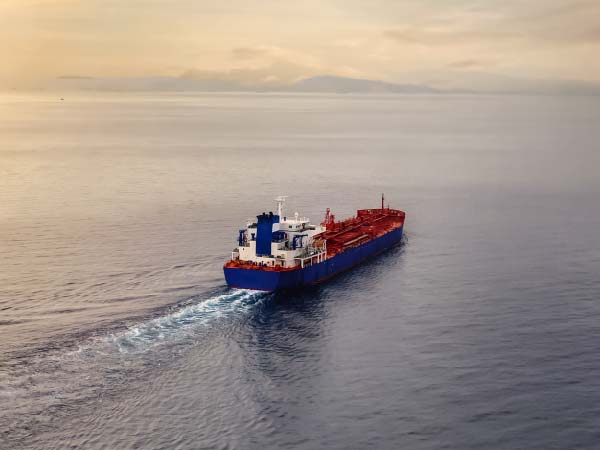Carbon offsetting and net zero commitments are currently in a patchy and unregulated state. However, regulated carbon credit markets are growing and there is increasing legislation on a global scale around carbon reporting and reduction.
When it comes to shipping, the lack of clarity is particularly acute. Voluntary carbon offsetting is unregulated and not always scrutinised, so whether to include transportation in offsetting and net zero commitments is left to each entity to decide for itself, creating uneven comparisons and confusion for stakeholders making decisions on carbon emissions.
There is also some disagreement around which activities reduce emissions, and over the difference between “net zero” and zero emissions. Some organisations accept carbon offsetting as a way to achieve net zero emissions, as the carbon emitter pays to ensure that the same amount of carbon dioxide they emit is removed from the atmosphere elsewhere. However, these offsets are unregulated and not necessarily verifiable, and they mean that the polluting technologies are still being used.
“Zero emissions” or “zero carbon” means that the carbon dioxide was not emitted in the first place, usually meaning the vessel is using a different fuel source. These terms are therefore very different to “net zero emissions”, although this is not always made clear.
Carbon offsetting is becoming more prevalent
Compared to its popularity in some other sectors, carbon offsetting in shipping has until now been reasonably discouraged, with a focus instead on reducing carbon emissions. Gains through technology, fuel, and operational improvements, driven by both economic and legislative factors, have been steady but will take decades to reach zero.
In the meantime, some marine fuel traders offer voluntary carbon offsets, in theory meaning that the vessel’s carbon emissions are offset so not counted. However, these voluntary offsets are not accepted by either the IMO or the EU.
This is one of several points of friction that exist between voluntary and compliance carbon schemes. However, as carbon markets are becoming more mature and more regulators are becoming involved in national or regional schemes, carbon offsetting is slowly growing more standardised across reporting regimes, and the voluntary market will likely see increasing standardisation too.
Mandatory emissions trading schemes (ETSs) are growing in quantity and in scope, with plans for better collaboration between regional schemes so that emissions are only subject to one carbon tax and to ensure that each carbon credit is also only used once. As these schemes grow and develop, they are increasingly moving to incorporate a broader scope, including shipping.
The EU has proposed an extension to its ETS to include all emissions from ships above 5,000 gross tonnage for voyages within the EU and 50% of the emissions of voyages starting or ending within the EU, regardless of the vessel’s flag. Importers will need to purchase and retire allowances for each tonne of CO2 emitted in line with this legislation at prices determined by the EU carbon market, which is estimated to rise to €100/tonne by 2030.
To add to this economic incentive for vessels to reduce their carbon dioxide emissions, there have been statements of intent to reach zero-emission shipping by 2050 from many quarters. At the recent COP26, 14 countries including the UK, USA and Panama participated in a Declaration on Zero Emission Shipping by 2050. There is also pressure on the IMO to set a 2050 deadline for zero emissions; more than 200 commodity, finance and shipping companies released the Call to Action for Shipping Decarbonisation, presented to world governments ahead of COP26.
Start planning now
It is clear from the timescales above that zero emissions are going to take time to achieve. Organisations looking to achieve net zero, on the other hand, whether to satisfy stakeholder demand or to reduce the cost of compliance with carbon taxes, have the opportunity to use carbon offsetting and carbon credits much sooner than this. But as the use of offsets continues to grow, there is likely to be more scrutiny over offsetting projects and accounting.
Organisations looking to invest in voluntary carbon credits therefore need to assess whether they have the processes and technology in place to support their offsetting goals and record the specifics of each project they are invested in. This both helps the organisation demonstrate the added value their credits provide, such as whether a carbon reduction initiative also improves water quality, and allows them to demonstrate that their offsetting processes are robust, not mere greenwashing.
Compliance markets are on the horizon
Organisations that do not invest in voluntary carbon offsetting will still soon need the systems and processes in place to manage mandatory carbon reporting and offsetting, as this becomes increasingly common for commodity traders, importers, and vessel charterers.
The timescales for bringing these systems in are shorter than you may expect. The proposed changes to the EU ETS include emissions reporting from January 2023 and payment for emissions from January 2026. Organisations without effective digital systems to manage these new obligations will soon find themselves under a growing administrative burden and under pressure to demonstrate the accuracy of their reporting mechanisms.
Technology matters
Any business that is involved in transporting commodities, whether seller, charterer, or buyer, will need to be monitoring their carbon emissions as a minimum, and likely actively offsetting them within the next few years. The global shipping fleet does not have the technological capacity to reach zero emissions in this short timeframe, but the digital technology does exist to help organisations meet their carbon obligations over the decades until zero emissions is possible.
Gen10 have created NetZero OS to help you manage your carbon reporting, offsetting and credits; from origination to verification and retirement of credits. NetZero OS allows you to create a digital record of your environmental assets that can be allocated to your real-world activities and integrated with your existing commodity management processes.
Create a complete and easily verifiable audit trail of each carbon asset, how it has been traded or allocated and the activity it is offsetting when it is retired to prove your commitment to your ESG goals. Combine real-time monitoring with comprehensive reports to understand where to target further carbon reduction projects.
Manage your complete portfolio of environmental market credits alongside your physical assets for simple monitoring, verification, and reporting, as well as the ability to adapt as carbon markets and obligations continue to change over time.



